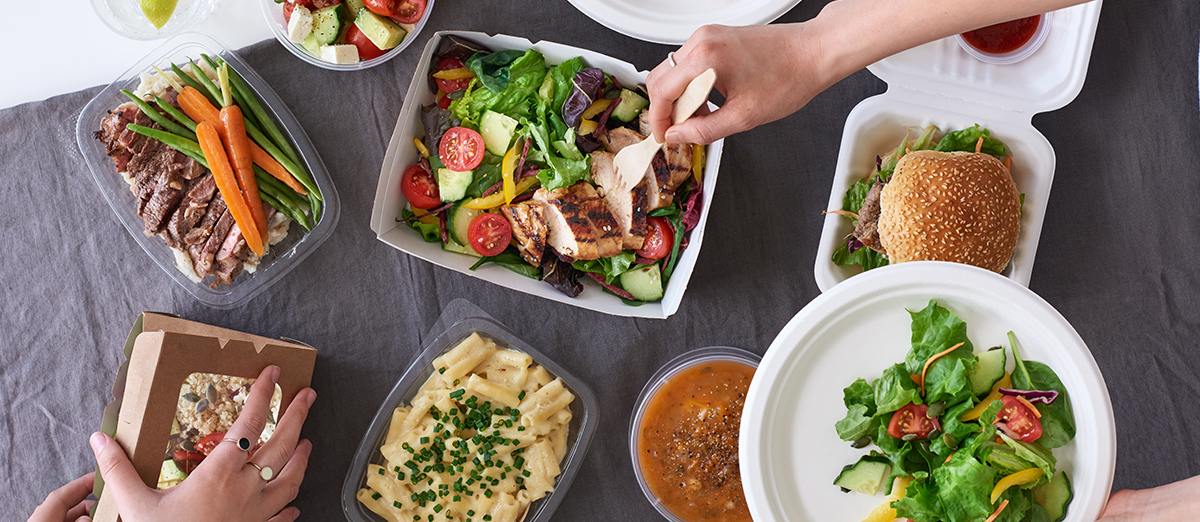
Everything You Always Wanted To Know About Flatware But Were Afraid To Ask
Believe it or not, flatware is actually one of the most important things in your restaurant. Don’t believe us? Bear with us for a moment.
Valentine’s Day was just yesterday. One of the biggest days for restaurants of the year. It’s always an opportunity for your business to make a great first impression on a potential new recurring customer. But how do you ensure you leave a good impression on your customers? Or more importantly what makes them willing to open their wallets for your food?
It’s probably not what you’d expect.
In a study performed by Denver’s Daniels College of Business, they asked what factor made consumers most willing to spend more at a restaurant. They found that the ambiance was actually the biggest factor when it comes to spending. Obviously food quality and service were also factors, but the ambiance had the largest positive effect.
What does that mean? It means that if you want to make that good first impression, you need to focus on creating the right ambiance.
Okay, but what does that have to do with flatware?

Great question. But I’m afraid we have to answer it with a question of our own. What is ambiance anyway?
We all understand that ambiance is the general look and feel of your restaurant. But when you break that down into smaller pieces, you realize that everything contributes to your ambiance. The food, the uniforms of the servers, the menu, the decor, the furniture, and yes, the flatware.
In fact, the flatware plays a huge part in creating the right atmosphere for your restaurant, particularly if you are a fine dining establishment. Think about it. Besides the food, what other part of the restaurant are the customers going to put in their mouths?
When you’re paying $35 or more for an entree, how would you feel if you were eating it with what felt like cheap cutlery you would find at a 24-hour diner? Skeptical, to say the least. You’re going to want something that feels good in your hand, and matches the aesthetic of the restaurant, right?
So how do I know what flatware is right for me?

Another great question, hypothetical reader! Choosing the right flatware can be a daunting task for any restaurateur. As always, PJP is here to help.
Far and away, the most important aspect in choosing a flatware pattern is metal composition. In order for a metal item to be classified as stainless steel in the U.S., it must contain a minimum of 13% chromium (chrome). For many years, entry level flatware was imported into the U.S. in this formulation, but it simply did not hold up. So, the accepted minimum formulation became 18% chromium (18 chrome or 18/0).
To this day, much of the higher volume flatware patterns are 18/0 and many are made in many factories under the same or similar brand names (e.g. Windsor, Dominion, Old English, Beefeater). The fact of the matter is that most operators consider their flatware to be disposable. Even more undeniable is the fact that this product will turn gray, it will rust, it will pit, it will corrode and it is much more likely to be thrown away by careless staff. It is especially affected by low temperature (chemical) dishwashers.
Many users, especially hotels and clubs, decided long ago that this type of performance would not do, so manufacturers began adding nickel to the metal alloy to help the ware keep its luster and sheen and to make it impervious to rusting, pitting and corrosion. You will often see them represented as 18/8 or 18/10. This means that, in addition to the 18% chromium, the alloy also includes either 8% or 10% nickel. It will retain its out-of-the-box luster for years to come. You should know, however, that nickel is a soft metal and flatware patterns with nickel are more susceptible to abrasions from handling and warewashing.
Aside from the metal composition, you obviously always want to select a pattern that fits with your restaurants theme. If you want to look at the wide range of flatware options available to you, just ask your PJP sales person!
Got any more questions about flatware that we didn’t answer? Let us know so we can help! Don’t forget to share in the comments below or on any of our social media accounts. Follow us on Facebook, Twitter, Instagram, and YouTube!






Write a Comment